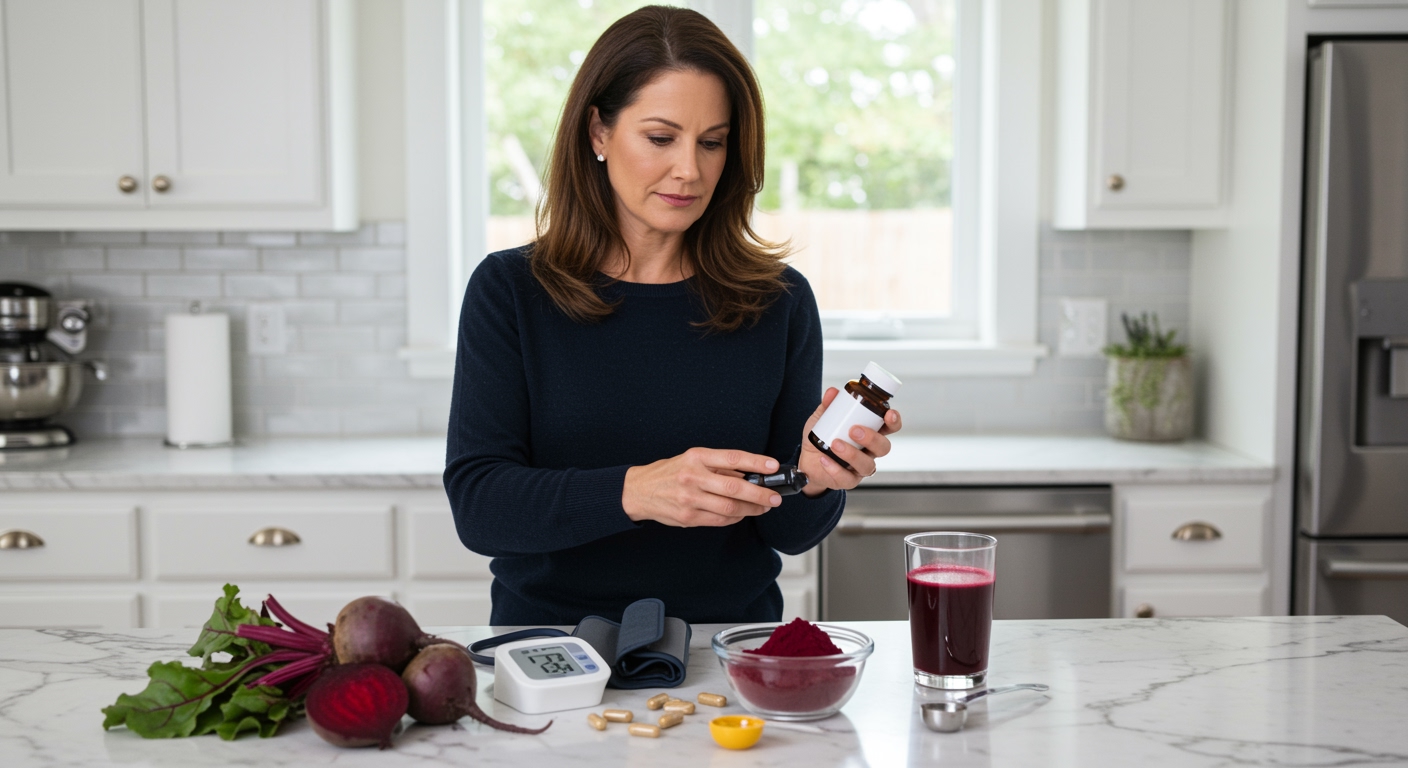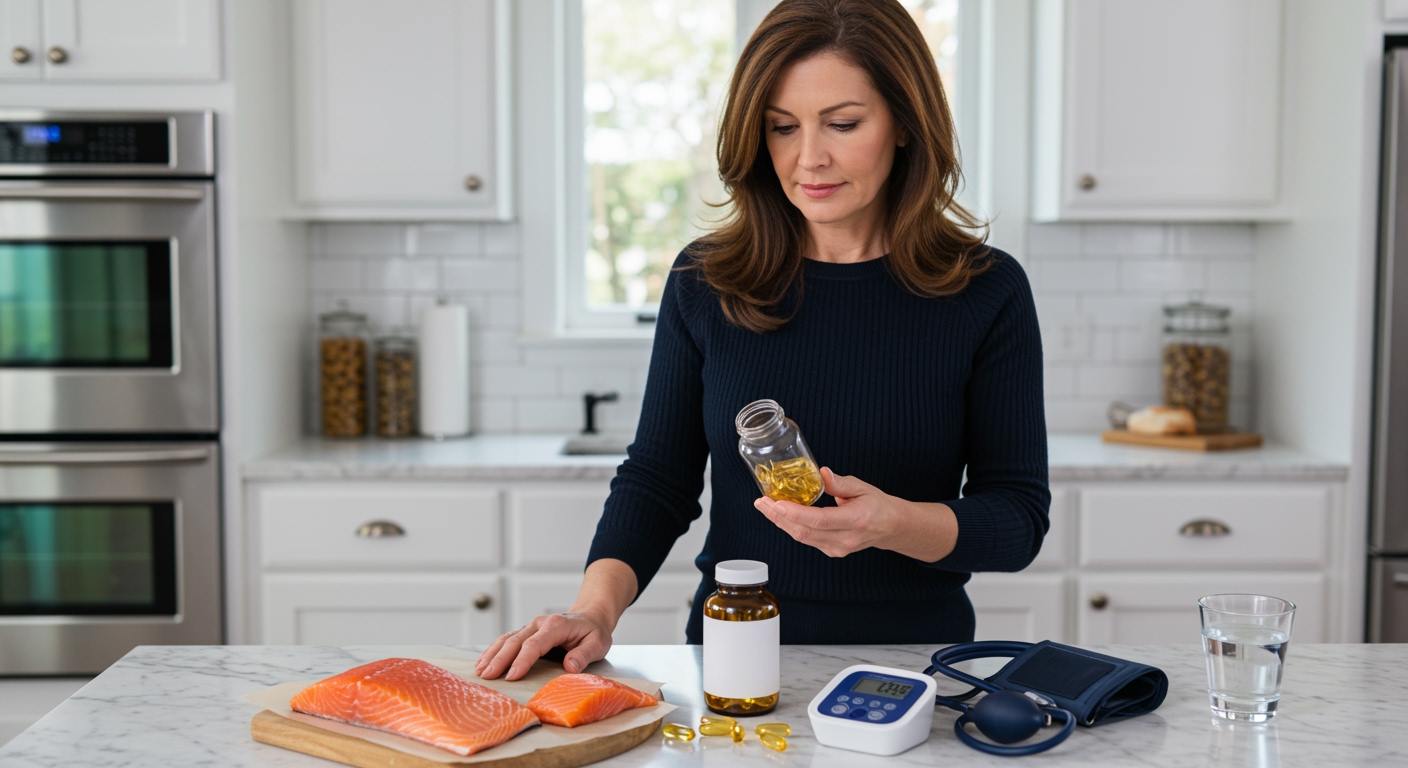✪ Key Takeaway: Venison is generally safe for hypertensive patients due to its low sodium content and lean protein profile.
Introduction
Your doctor just told you to watch your blood pressure, and now every food choice feels like walking through a minefield.
You might be wondering if that venison steak your hunting friend offered is safe for your condition, especially since most advice tells you to avoid red meat completely.
Hi, I’m Abdur, your nutrition coach, and today I’m going to explain exactly how venison affects blood pressure and whether it belongs in your heart-healthy meal plan.
What Makes Venison Different From Regular Red Meat?
Venison stands apart from conventional red meats in several important ways that matter for your blood pressure.
Wild deer consume a natural diet of grasses, herbs, and browse plants, which creates meat with a completely different nutritional profile than grain-fed cattle.
The most significant difference lies in the sodium content – venison contains only about 54 milligrams of sodium per 100 grams, compared to 72 milligrams in beef.
This lower sodium level occurs because wild animals do not receive salt supplements or processed feeds that increase mineral content in their tissues.
Venison also contains higher levels of omega-3 fatty acids and conjugated linoleic acid, both of which support cardiovascular health through anti-inflammatory mechanisms.
The lean nature of venison means it contains less saturated fat per serving, which helps maintain healthy cholesterol levels that work alongside blood pressure management.
✪ Fact: Wild venison contains 60% less fat than grain-fed beef while providing the same amount of protein.
How Does Venison Affect Your Blood Pressure Directly?
The relationship between venison consumption and blood pressure involves several physiological mechanisms that work in your favor.
Unlike processed meats that contain high sodium levels, venison provides high-quality protein without the blood pressure-raising effects of excess salt.
The protein in venison contains all essential amino acids, including arginine, which your body converts to nitric oxide – a compound that helps relax blood vessel walls.
When blood vessels relax, they create less resistance to blood flow, which naturally reduces the pressure your heart must generate to pump blood throughout your body.
Venison also provides significant amounts of potassium and magnesium, two minerals that work together to balance sodium levels and support healthy blood pressure regulation.
The iron content in venison supports healthy red blood cell formation, which improves oxygen delivery and reduces the workload on your cardiovascular system.
Research shows that lean red meats like venison do not significantly raise blood pressure when consumed as part of a balanced diet that includes plenty of vegetables and whole grains.
✪ Pro Tip: Pair venison with potassium-rich vegetables like spinach or sweet potatoes to maximize blood pressure benefits.
What About The Cholesterol Content In Venison?
Many hypertensive patients worry about cholesterol because high blood pressure and high cholesterol often occur together.
Venison contains approximately 95 milligrams of cholesterol per 100-gram serving, which is comparable to other lean meats like chicken breast.
However, the type of fat in venison matters more than the total cholesterol content for your cardiovascular health.
Wild game meat contains higher ratios of polyunsaturated fats to saturated fats compared to conventional beef, which helps maintain healthier blood lipid profiles.
The omega-3 fatty acids in venison actually help reduce inflammation in blood vessel walls, which can improve both cholesterol levels and blood pressure over time.
Your liver produces most of the cholesterol in your bloodstream, so dietary cholesterol from whole food sources like venison has minimal impact on blood cholesterol levels for most people.
The key lies in preparation methods – grilling, roasting, or broiling venison without added fats maintains its heart-healthy properties while avoiding excess calories.
✪ Note: Dietary cholesterol affects blood cholesterol levels in only about 25% of the population due to genetic variations.
How Much Venison Can You Safely Eat With High Blood Pressure?
Portion control remains crucial for hypertensive patients, even with heart-healthy proteins like venison.
A safe serving size for venison is 3-4 ounces (85-115 grams), which provides about 25-30 grams of high-quality protein without overwhelming your system.
You can safely include venison in your diet 2-3 times per week as part of a balanced meal plan that emphasizes vegetables, whole grains, and healthy fats.
The timing of consumption matters less than the overall dietary pattern, but eating venison earlier in the day allows your body more time to process the protein and minerals.
Always balance venison meals with fiber-rich vegetables and complex carbohydrates to slow digestion and maintain steady blood sugar levels throughout the day.
Avoid combining venison with high-sodium seasonings, processed sides, or excessive amounts of added fats that could counteract its blood pressure benefits.
Monitor your individual response by checking blood pressure readings before and after incorporating venison into your regular meal rotation.
✪ Pro Tip: Keep a food and blood pressure diary for two weeks to track how venison affects your individual readings.
What Cooking Methods Work Best For Hypertensive Patients?
The way you prepare venison can either support or undermine your blood pressure management goals.
Grilling, broiling, or roasting venison allows excess fat to drain away while preserving the meat’s natural flavor and nutritional benefits.
Avoid frying or sautéing in butter or oil, as these methods add unnecessary calories and saturated fats that can negatively impact cardiovascular health.
Season venison with herbs and spices instead of salt-based seasonings to enhance flavor without increasing sodium intake.
Garlic, rosemary, thyme, and black pepper provide excellent flavor while offering additional antioxidant compounds that support blood vessel health.
Marinating venison in acid-based solutions like lemon juice or vinegar helps tenderize the meat while adding flavor without sodium.
Cook venison to an internal temperature of 160°F to ensure food safety while maintaining its tender texture and nutritional value.
✪ Fact: Herbs like garlic and rosemary contain compounds that may help lower blood pressure naturally when consumed regularly.
The Bottom Line
Venison can be a safe and beneficial protein choice for people with high blood pressure when consumed in appropriate portions and prepared using heart-healthy cooking methods.
The best foods for your health are often the ones that come closest to their natural state, and wild venison fits this principle perfectly.
I would love to hear about your experiences with venison or any questions you might have about incorporating game meats into a blood pressure-friendly diet – please share your thoughts in the comments below.
References
At NutritionCrown, we use quality and credible sources to ensure our content is accurate and trustworthy. Below are the sources referenced in creating this article:
- Wild Game Meat: The Benefits of Eating Venison
- Healthline: Is Venison High in Cholesterol?
- American Heart Association: Increased Heart Disease Risk from Red Meat
- WebMD: Health Benefits of Deer Meat





